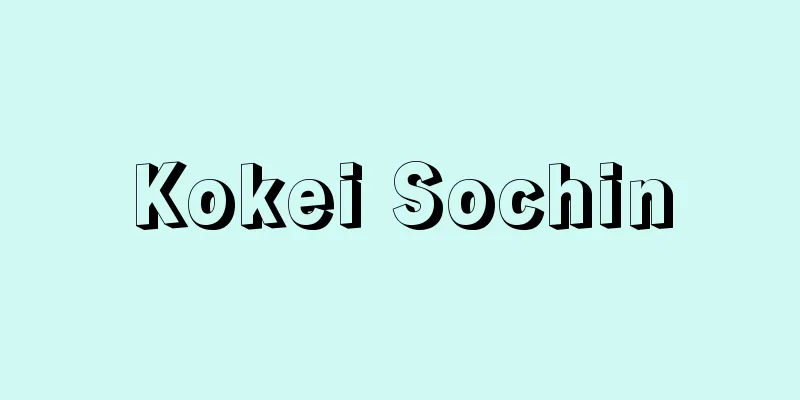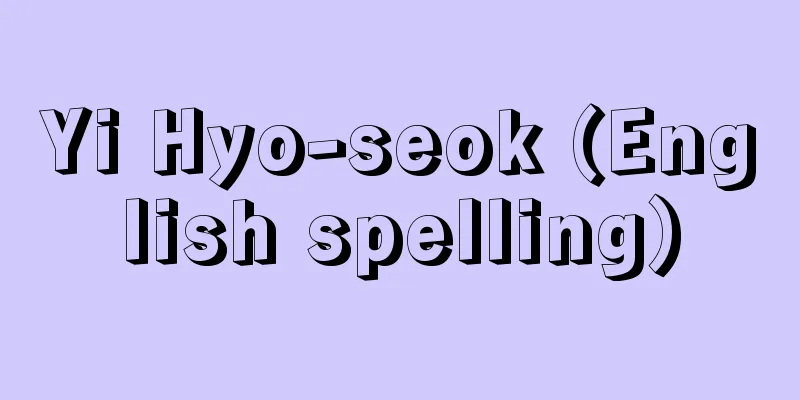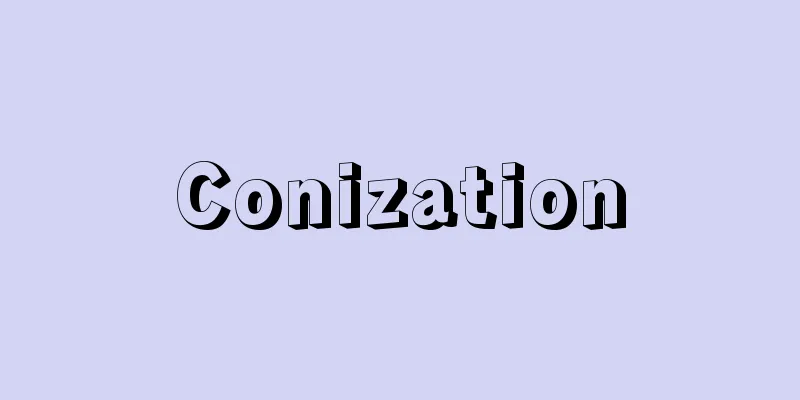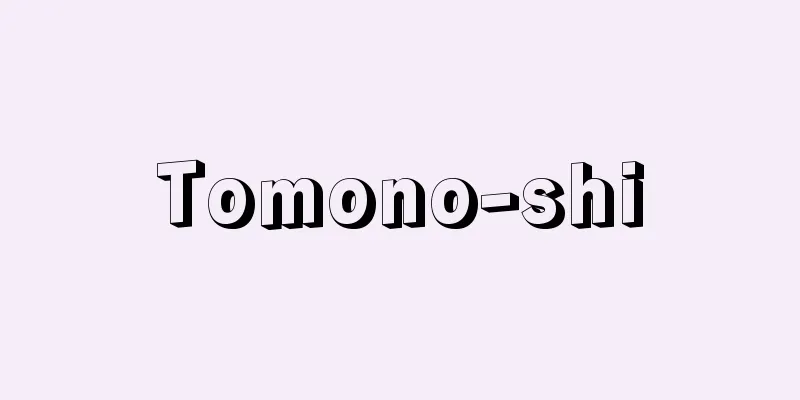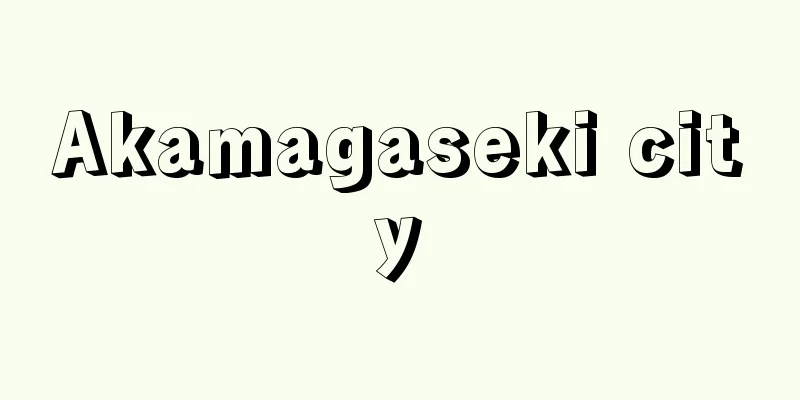High school baseball
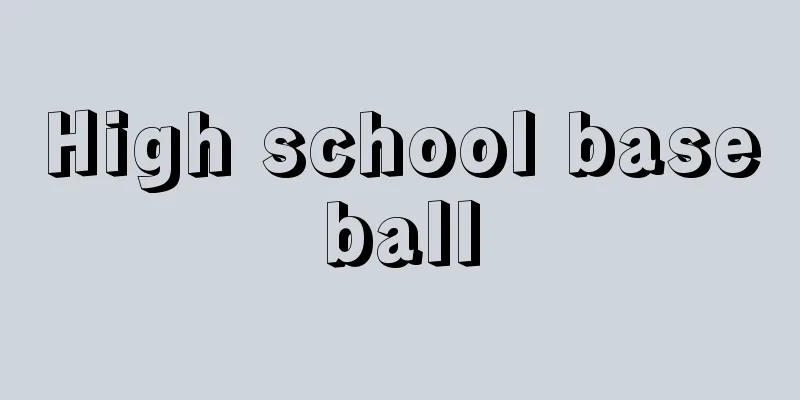
|
A baseball game played by high school students. Until the birth of professional baseball in 1936 (Showa 11), baseball in Japan was represented by junior high school baseball and baseball at the Tokyo Big Six University League. Junior high school baseball became high school baseball with the educational reforms after World War II. Therefore, the history of baseball at today's high schools begins with the history of baseball at junior high schools under the old system. [Junji Kanda and Hiroshi Morioka, June 23, 2020] historySecondary school baseball started mainly in universities and high school affiliated schools. It is said that around 1885 (Meiji 18), Tokyo Prefectural First Middle School (now Tokyo Metropolitan Hibiya High School) was playing baseball, and it gradually spread to secondary schools all over the country. In the summer of 1915 (Taisho 4), Asahi Shimbun hosted the first National Secondary School Baseball Championship (now the National High School Baseball Championship, Summer Koshien) at Toyonaka Ground in Osaka. This first tournament was the catalyst for the rapid spread of secondary school baseball throughout the country, and it became a breeding ground for the prosperity of Japanese baseball. As a result, it also contributed greatly to improving the quality of university teams. The Asahi Shimbun, which hosted this tournament, aimed to make baseball a source of energy for the nation. Therefore, it is noteworthy that they strictly warned students not to forget their duties as amateur athletes, so as to prevent a professional sportsman mentality from infiltrating among students. The careful consideration shown by the organizers at the beginning became the foundation of the glorious history that followed. Then, from 1924 onwards, the Mainichi Newspaper Company began to host the National Junior High School Baseball Tournament (now the Senior High School Baseball Tournament, the Spring Koshien) every year from the end of March to April. This tournament is characterized by a recommendation system that invites players based on the results of local games. Thus, junior high school baseball came to be run by a competition between the two major newspapers, the Mainichi in the spring and the Asahi in the summer. In the autumn of 1924, the first Meiji Jingu Athletic Meet was held in Tokyo, and as a major event of this tournament, a baseball tournament was held for the junior high school teams that had performed well in the spring and summer tournaments. This tournament was succeeded by the National Athletic Meet (Kokutai) after World War II. These three tournaments contributed to the development of junior high school baseball before the war and high school baseball after the war. The national tournament had been developing steadily since the first tournament in 1915, but was cancelled during World War II in 1942 (Showa 17) when the Ministry of Education refused to allow newspapers to sponsor the tournament. However, it was quickly revived in the summer of 1946 (Showa 21) during the postwar period of turmoil, and the 28th tournament was held, co-sponsored by the newly formed National Secondary School Baseball Federation (now the Japan High School Baseball Federation) and the Asahi Shimbun Company. Secondary school baseball also participated in the first National Athletic Meet in the fall of the same year. The following spring in 1947, the Mainichi Shimbun Company revived the selection tournament and held the 19th tournament. In 1948, due to the education reform, secondary schools were transformed into new high schools, and secondary school baseball came to be called high school baseball. After this, high school baseball continued to develop, with 4,163 high school teams participating in the preliminary rounds of the summer tournaments in 2002 and 2003. This is about 5.6 times the number of 745 schools in 1946, just after the end of the war, and an astonishing number compared to the 73 schools in the first tournament in 1915. However, the number has since decreased due to the declining birthrate, and in 2019, the number of participating schools was 3,730 (both in the summer Koshien). There are three reasons for the development of high school baseball: (1) Support for journalism. A representative example of this was the prolific writing by Tobita Suishū in the Asahi Shimbun newspaper. (2) Radio and television broadcast the tournament. Radio began broadcasting detailed live coverage of the tournament in 1927, and television began live broadcasting in 1953, with all matches being broadcast in principle. (3) Completion of Koshien Stadium. In the summer of 1924, Hanshin Electric Railway built a large stadium on the banks of the Mukogawa River. Since then, both the spring and summer tournaments have been held at Koshien Stadium, and "Koshien" has become synonymous with the national high school baseball tournament. [Junji Kanda and Hiroshi Morioka, June 23, 2020] Records and TopicsThus, high school baseball is flourishing today, but in the meantime, many anecdotes have arisen. The first National High School Baseball Championship was held in 1915 at Toyonaka Grounds, which had a wooden stand with a reed-roof and a capacity of less than 400 people, and the outfield was made up of piled-up earth. The fourth tournament was canceled due to the rice riots. In the sixth tournament (1920), there was no age limit at the time, so pitcher Ogata Hatayo, who had been a Hosei University player until the previous year, participated from Toyokuni Junior High School. The game between Shizuoka Junior High School and Maebashi Junior High School in the 12th tournament (1926) went into 19 extra innings thanks to the efforts of pitchers Seizo Ueno of Shizuoka and Jin Maruhashi of Maebashi, and the semi-final match between Chukyo Commercial High School and Akashi Junior High School in the 19th tournament (1933) saw pitchers Masao Yoshida of Chukyo High School (1914-1996) and Takeo Nakata of Akashi High School (1915-1943) pitch against each other in a heated battle that went into 25 extra innings and lasted 4 hours and 55 minutes, with Chukyo Commercial High School winning 1-0. In the quarterfinals of the 40th tournament (1958), Tokushima Commercial High School's Bando Eiji (1940-) and Uozu High School's Muratsubaki Teruo (1940-) faced off in 18 extra innings, 3 hours and 38 minutes, with the score tied at 0-0. The match was replayed the next day, with Tokushima Commercial High School winning 3-1. In the finals of the 51st tournament (1969), Matsuyama Commercial High School's Inoue Akira (1951-) and Misawa High School's Ota Koji (1952-) faced off in the finals, with Tokushima Commercial High School's Muratsubaki Teruo (1952-) pitching 18 innings, 3 hours and 38 minutes, with the score tied at 0-0. ) in a 18-inning, 4-hour and 16-minute pitching duel with Matsuyama Commercial High School, which ended in a 0-0 draw in the first rematch of the finals, with Matsuyama Commercial High School winning 4-2. In the 18th National High School Baseball Invitational Tournament (Spring Invitational Tournament) in 1941, pitcher Takehiko Bessho (Takikawa Junior High School) continued to pitch with all his might despite breaking his left arm during the match. However, in 1974, the use of metal bats was allowed, and there were more long hits, with a total of 11 home runs that went over the fence in that year's tournament. In the 59th tournament (1977), Tadashi Kawabata of Daitetsu High School hit the first-ever walk-off grand slam home run (against Tsukumi High School), and in the final, Koji Yasui of Toyo University Himeji High School hit the first-ever walk-off home run in a final against Toho High School. In the midst of this, the first perfect game in both spring and summer tournaments was achieved in the 50th tournament in the spring of 1978 by Maebashi High School pitcher Matsumoto Minoru (1960- ) in a 1-0 game against Hieizan High School, and then in the 66th tournament in the spring of 1994 by Kanazawa High School pitcher Nakano Masahiro (1976- ) in a game against Gonokawa High School. In the summer of 1982 (Showa 57), Ikeda High School's arrival completely changed the face of high school baseball. Under the guidance of coach Tsuta Fumiya (1923-2001), each player from batter number 1 to 9 held the bat long and full grip, and their full swings even scared the pitchers of other schools. In the quarterfinals of this tournament, they defeated Waseda Jitsugyo's pitcher Araki Daisuke (1964-), who was at the peak of both skill and popularity at the time, and in the finals they defeated Hiroshima Commercial High School, who faced them with a Koshien style that made heavy use of bunting, by a large margin to win the championship. The following spring of 1983, they continued to win by a large margin from the first game, achieving consecutive summer and spring victories, ushering in the "Ikeda era" in high school baseball. That summer, Ikeda High School was once again progressing smoothly, but PL Gakuen High School, led by the incredible first-year duo of Kuwata Masumi (1968-) and Kiyohara Kazuhiro, stood in their way. In the semi-finals, PL Gakuen High School defeated Ikeda High School 7-0, winning the championship and ushering in the "PL Gakuen Era." From then until 1987, the school continued to produce excellent players, and advanced to the finals almost every year. However, with the start of the Heisei era, the strength of each school became balanced, and it became rare for a particular high school to emerge with a strong team every year. In the midst of this, Yokohama High School, led by Matsuzaka Daisuke, emerged in 1998, and with overwhelming pitching power, they won consecutive spring and summer championships. The school won all official matches in the previous year's autumn prefectural and Kanto tournaments, the Meiji Jingu Baseball Tournament, the spring prefectural and Kanto tournaments, and the National Athletic Meet, setting a remarkable record of going undefeated throughout the year. In addition, Matsuzaka pitched a no-hitter in the final of the 80th summer tournament, setting numerous other records. In the 71st tournament in the spring of 1999, Okinawa Shogaku High School, representing Okinawa, won the championship, marking the first time that the championship flag had been handed over to Okinawa in both the spring and summer tournaments. In the 86th tournament in the summer of 2004, Komazawa University Affiliated Tomakomai High School won the championship, marking the first time that the championship flag had been handed over the Tsugaru Strait. In the 21st century, the 21st Century quota was introduced in the Spring Senbatsu Tournament in 2001, and the Jingu Tournament quota and the Hope quota (abolished in 2008) were created in 2003 to diversify the participating schools. In 2013, a rest day was set for the day after the quarterfinals in the Summer Tournament (added to the day after the semifinals in 2019), and in 2018, a tiebreaker system was introduced for the Spring Senbatsu Tournament (starting with 13 innings with no outs and runners on first and second base, excluding the final). In 2020 (Reiwa 2), both the Spring and Summer tournaments were canceled due to the spread of the new coronavirus disease (COVID-19). [Junji Kanda and Hiroshi Morioka, June 23, 2020] assignmentThe popularity of soccer at one time raised concerns about the future of high school baseball, but its popularity has not yet waned. The Japan High School Baseball Federation also requests that pitchers undergo health checks before the tournament to ensure health management, and that schools use multiple pitchers rather than relying on just one. Furthermore, the federation continues to reform the nature of the tournament, which has now become a national event, by having foreign schools in Japan and the Kyoto Korean School participate in the preliminary rounds in each region, and having high school students host the main tournament. However, there is constant debate over the imbalance in the number of participating schools in each preliminary round region, the pros and cons of "baseball study abroad" for high schools in regions with few participating schools, and the packed schedule throughout the regional and national tournaments. [Junji Kanda and Hiroshi Morioka, June 23, 2020] National High School Baseball ChampionshipThe first tournament was held in 1956. It was smaller in scale than the Koshien baseball tournament, and the national tournament was held in Osaka Prefecture at the end of August with representatives from 16 districts across the country. Since 1981, the venue has been moved to a baseball stadium in Hyogo Prefecture. [Junji Kanda and Hiroshi Morioka, June 23, 2020] National High School Part-time and Correspondence Course Baseball TournamentIn contrast to the grandeur of the Koshien High School Baseball Tournament, this is a baseball tournament for young people who study while working. It is called "another Koshien Tournament." In the hardball tournament, players who are 19 years old or older on April 2nd of that year are generally not allowed to participate as players, but this tournament has no age restrictions. In 1977 (Showa 52), the tournament was canceled due to long periods of rain, and the entertainer Kinichi Hagimoto (1941-) felt sympathy for the players who had to leave in tears. In 1978, he decided to always rush to the venue to encourage the players, which led to the tournament being broadcast on television and attracting attention. The first tournament was held in August 1953, and since then it has been held every summer at Jingu Stadium. Tenri High School is known as a strong team, and as of 2019, it has continued to win 13 consecutive championships. [Junji Kanda and Hiroshi Morioka, June 23, 2020] "Immortal High School Baseball" edited by Matsuo Toshiharu (1984, Baseball Magazine Co.)" ▽ "Encyclopedia of High School Baseball" edited by Kanda Junji (1986, Sanseido)" ▽ "Encyclopedia of All Koshien Participating Schools" edited by Morioka Hiroshi, revised and expanded edition (2008, Tokyodo Publishing)" ▽ "100 Years of High School Baseball History" by Morioka Hiroshi (2015, Tokyodo Publishing)" ▽ "Koshien Graffiti" edited by Asahi Shimbun, 2 volumes (Asahi Bunko)" [Reference] | | |This baseball stadium has a long history, having been completed in 1924 (Taisho 13). It is the franchise stadium of the professional baseball team Hanshin Tigers, and is also known as the mecca of high school baseball. It has a capacity of 47,541 people. Nishinomiya City, Hyogo Prefecture ©Shogakukan "> Hanshin Koshien Stadium Source: Shogakukan Encyclopedia Nipponica About Encyclopedia Nipponica Information | Legend |
|
高校生の野球試合のこと。1936年(昭和11)にプロ野球が誕生するまでは、日本の野球は中等学校野球と東京六大学の野球によって代表されていた。その中等学校野球が第二次世界大戦後の学制改革で高校野球となったのである。したがって、今日の高等学校の野球の歴史は、旧制の中等学校の野球の歴史から始まる。 [神田順治・森岡 浩 2020年6月23日] 歴史中等学校野球は大学や高等学校の付属校を中心に始まった。1885年(明治18)ごろには東京府立一中(現在の東京都立日比谷高等学校)でも行われていたといい、しだいに各地の中等学校に広がっていった。1915年(大正4)夏に朝日新聞社が主催して、第1回全国中等学校優勝野球大会(現在の全国高等学校野球選手権大会、夏の甲子園)を大阪の豊中(とよなか)グラウンドで開催した。この第1回大会を契機として全国の中等学校野球は急速に普及し、日本野球界隆盛の温床となった。その結果、大学チームの内容改善にも大いに貢献した。この大会を開催した朝日新聞社は、あくまでも野球を国民の気力の源泉となることを目的とした。そのため、プロ的スポーツマン気質が学生間に入り込まないように、学生に対しアマチュア・スポーツマンとしての本分を忘れぬよう厳に戒めたことは注目すべき点である。このように慎重な配慮を主催者が最初に示したことがその後の輝かしい歴史の礎(いしずえ)となった。続いて1924年以後、毎年3月末から4月にかけて全国選抜中等学校野球大会(現在の選抜高等学校野球大会、春の甲子園)を毎日新聞社が主催することになった。この大会は、地方の試合成績によって推薦制度で招待することが特色である。こうして中等学校野球は、春は毎日、夏は朝日と二大新聞社が競争で大会を実施するに至った。また、1924年秋に東京において第1回の明治神宮体育大会が開催され、この大会の一大行事として、春・夏の大会で活躍した中等学校のチームによる野球大会を行うことになった。この大会が第二次世界大戦後は国民体育大会(国体)に受け継がれている。以上の3大会が戦前の中等学校野球、戦後の高校野球界の発展に寄与している。 1915年の第1回大会以来、順調に発展してきた全国大会も、第二次世界大戦中、1942年(昭和17)に文部省が新聞社の主催を否として大会を中止させた。しかし、戦後の混乱期の1946年(昭和21)の夏には早くも復活し、新たに結成をみた全国中等学校野球連盟(現、日本高等学校野球連盟)と朝日新聞社の共催で第28回大会を挙行した。また、同年秋の第1回国民体育大会にも中等学校野球が参加した。翌1947年春には毎日新聞社が選抜大会を復活させ、第19回大会を実施した。1948年から学制改革により中等学校が新制の高等学校に変じ、中等学校野球が高校野球とよばれることになった。 この後、高校野球は発展の一途をたどり、2002年(平成14)と2003年の夏の大会の予選に参加した高校チームの数は各4163校にのぼった。これは、終戦直後の1946年の745校の約5.6倍にあたり、1915年の第1回大会の73校に比較すれば驚異的数字である。しかし、その後は少子化の影響もあって減少し、2019年(令和1)の参加校数は3730校であった(いずれも夏の甲子園)。 高校野球発展の理由としては次の3点があげられる。 (1)ジャーナリズムの支援。その代表的なものは朝日新聞紙上に飛田穂洲(とびたすいしゅう)が健筆を振るったこと。 (2)ラジオ、テレビが放送を行ったこと。1927年からラジオが克明に大会の実況放送を始め、1953年からはテレビの中継放送も開始され、原則全試合が中継された。 (3)甲子園球場の完成。1924年夏、阪神電鉄が武庫川(むこがわ)畔に大球場を建設し、以後、春・夏大会ともに甲子園球場で行われ、「甲子園」は高校野球全国大会の代名詞となっている。 [神田順治・森岡 浩 2020年6月23日] 記録・話題こうして今日、高校野球は隆盛を迎えているが、この間にさまざまなエピソードが生まれた。1915年の全国高等学校野球選手権大会第1回大会が行われた豊中グラウンドは、収容人員400人たらずのよしず張り屋根の木造スタンド、外野は土盛りであった。第4回大会は米騒動で中止。第6回大会(1920)では、当時年齢制限がなかったために、前年まで法政大学選手の小方二十世(はたよ)投手が豊国(ほうこく)中学から出場した。第12回大会(1926)の静岡中対前橋中戦は静岡の上野精三と前橋の丸橋仁両投手の奮闘により延長19回に及び、さらに第19回大会(1933)の準決勝における中京商と明石(あかし)中の対戦は、中京の吉田正男(1914―1996)と明石の中田武雄(1915―1943)両投手の投げ合いで延長25回、試合時間4時間55分の熱戦の末、1対0で中京商が勝利。また、第40回大会(1958)準々決勝、徳島商の板東英二(ばんどうえいじ)(1940― )、魚津(うおづ)高の村椿輝雄(むらつばきてるお)(1940― )の投げ合いは延長18回、3時間38分、0対0で、翌日再試合となり3対1で徳島商の勝利、さらに第51回大会(1969)決勝戦は、松山商の井上明(1951― )、三沢高の太田幸司(1952― )の投げ合いで延長18回、4時間16分、0対0で、初の決勝再試合となり4対2で松山商が優勝したのをはじめ、1941年選抜高等学校野球大会(春の選抜)第18回大会で試合中に左腕を骨折しながら力投を続けた別所毅彦(たけひこ)投手(滝川中)など、印象深い試合は投手が中心であった。しかし、1974年から金属バットの使用が認められ長打が多くなり、その年の大会ではオーバーフェンスのホームランが計11本も出た。第59回大会(1977)には、大鉄高の川端正が史上初の満塁サヨナラホームランを打ち(対津久見高)、決勝戦では東洋大姫路高の安井浩二が対東邦高戦で決勝史上初のサヨナラホームランを放った。こうしたなかで、春夏あわせても初めてという完全試合を1978年春の第50回大会で前橋高の松本稔(みのる)(1960― )投手が対比叡山(ひえいざん)高戦に1対0で達成、次いで1994年(平成6)春の第66回大会で金沢高の中野真博(まさひろ)(1976― )投手が対江の川(ごうのかわ)高戦で達成している。 1982年(昭和57)夏、池田高の登場で高校野球の様相が一変した。監督蔦文也(つたふみや)(1923―2001)の指導のもと、1番から9番までの各選手がグリップいっぱいにバットを長く持ち、フルスイングしてくる打線は各校の投手に恐怖感すら与えた。この大会、準々決勝で当時実力人気ともに絶頂にあった早稲田実業の投手荒木大輔(あらきだいすけ)(1964― )を攻略、決勝でもバントを多用した甲子園戦法で立ち向かう広島商を大差で降して優勝した。翌1983年春も初戦から大量点で勝ち進んで夏春連覇を達成、高校野球に「池田時代」を築いた。その年の夏、ふたたび順当に勝ち進む池田高の前に、桑田真澄(1968― )、清原和博(かずひろ)という驚異の1年生コンビを軸としたPL学園高が立ちはだかった。準決勝で対戦したPL学園高は、7対0と一方的に池田高を降して優勝、「PL学園時代」の幕をあけた。以後1987年まで次々と好選手を輩出し、毎年のように決勝戦まで進出した。しかし、平成に入ると各校の勢力が均衡し、特定の高校が毎年強力チームを率いて登場することは少なくなった。 こうしたなか、1998年(平成10)松坂大輔を擁する横浜高が登場、圧倒的な投手力をもって春夏連覇を達成した。同校は前年の秋の県大会・関東大会、明治神宮野球大会、春の県大会・関東大会、さらに国体と、すべての公式戦に優勝して年間無敗という大記録を打ち立てたほか、松坂投手は夏の第80回大会決勝戦でノーヒットノーランを達成するなど、数々の記録を残した。 1999年春の第71回大会において、沖縄代表の沖縄尚学(しょうがく)高が優勝、春夏通じて初めて優勝旗が沖縄に渡った。また、2004年(平成16)夏の第86回大会では、駒沢大附属苫小牧(とまこまい)高が優勝、初めて優勝旗が津軽海峡を越えた。 21世紀に入ると、2001年に春の選抜大会に21世紀枠を導入、2003年には神宮大会枠と希望枠(2008年で廃止)を新設することで、出場校の多様化を図った。2013年には夏の大会から準々決勝の翌日に休養日を設定(2019年には準決勝翌日にも追加)、2018年には春の選抜大会からタイブレーク制度(延長13回から無死走者一・二塁の設定で開始。決勝は除く)を導入するなど、選手の負担軽減に向けた改革を次々と行っている。2020年(令和2)は新型コロナウイルス感染症(COVID(コビッド)-19)の蔓延(まんえん)により、春夏ともに開催が中止された。 [神田順治・森岡 浩 2020年6月23日] 課題一時のサッカー人気の沸騰により、高校野球の将来が不安視されたこともあったが、いまだにその人気は落ちていない。また日本高等学校野球連盟は、健康管理の面から、大会前に投手の健康診断を実施、1人の投手だけに頼らず複数の投手を起用することを各校に要請している。さらに、在日外国人学校・京都韓国学園の予選各地域における参加や、本大会での高校生による司会進行など、いまや国民行事となった大会のあり方を改革し続けている。しかし予選各地域における参加校数のアンバランスや、参加校数の少ない地域の高校への「野球留学」の是非、地方大会・全国大会を通じた過密日程などをめぐっては議論が絶えない。 [神田順治・森岡 浩 2020年6月23日] 全国高等学校軟式野球選手権大会1956年(昭和31)に第1回大会を開始。硬式の甲子園大会より規模は小さく、全国16地区の代表によって、全国大会が8月末に大阪府で開催された。1981年からは会場を兵庫県の球場に移して行われている。 [神田順治・森岡 浩 2020年6月23日] 全国高等学校定時制通信制軟式野球大会甲子園の高校野球大会の盛大さと対照的な、働きながら学ぶ青少年のための野球大会である。「もう一つの甲子園大会」とよばれている。硬式の大会では、その年の4月2日に19歳以上の者は原則、選手として参加できないのに対し、この大会では年齢制限はいっさいない。1977年(昭和52)の大会が長雨で中止になったため泣く泣く帰る選手に同情したタレントの萩本欽一(はぎもときんいち)(1941― )が、翌1978年からかならず会場に駆けつけ選手を激励することにしたことが一因となり、テレビにも放映され脚光を浴びるようになった。1953年8月に第1回大会を開催、以来神宮球場を中心に毎夏挙行している。天理高が強豪として知られ、2019年時点で13連覇を継続中である。 [神田順治・森岡 浩 2020年6月23日] 『松尾俊治編『不滅の高校野球』(1984・ベースボール・マガジン社)』▽『神田順治編著『高校野球の事典』(1986・三省堂)』▽『森岡浩編『甲子園全出場校大事典』増補改訂版(2008・東京堂出版)』▽『森岡浩著『高校野球100年史』(2015・東京堂出版)』▽『朝日新聞社編『甲子園グラフィティ』全2冊(朝日文庫)』 [参照項目] | | |1924年(大正13)竣工の古い歴史をもつ野球場。プロ野球阪神タイガースのフランチャイズ球場であるとともに、高校野球のメッカとして知られる。収容人数4万7541人。兵庫県西宮市©Shogakukan"> 阪神甲子園球場 出典 小学館 日本大百科全書(ニッポニカ)日本大百科全書(ニッポニカ)について 情報 | 凡例 |
>>: Huang Gongwang - High School
Recommend
Aymara - Aimaara (English spelling)
An indigenous group living in Peru and Bolivia in...
Pollen cell
… A similar alternation of generations occurs in ...
Fish pump - Fish pump (English spelling)
A device that sucks up fish and other fish with wa...
Pulmonary edema
(1) Pulmonary edema Definition Pulmonary edema is ...
Glacial landform
A landform created by glacial action. It may also ...
Usa - Usa
A village located in central Kochi Prefecture, abo...
Hallucinations - hallucinations
A pathological mental state in which hallucination...
Gandhi and Lenin
…He was a supporter of Tilak and then approached ...
Morozov, ST (English spelling) MorozovST
…For generations, they received the title of boya...
NOx - nitrogen oxide
A compound of nitrogen and oxygen (O) produced whe...
Geng Yin Yearbook - Kouin Nenjaku
In 690 (the year of the Koin Tiger), by order of E...
Shimizu Tunnel - Shimizu Tunnel
A 9,702-meter-long single-track railway tunnel on...
Saku [town] - Saku
A former town in Minamisaku District, eastern Naga...
Open Course
Open course is a type of track used in track and f...
Indian senna (English spelling) Indiansenna
...The legume is flattened, rectangular with roun...
